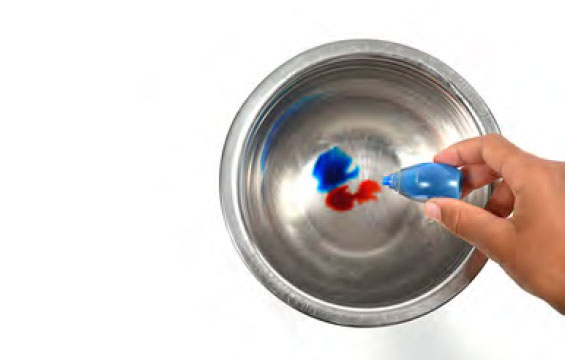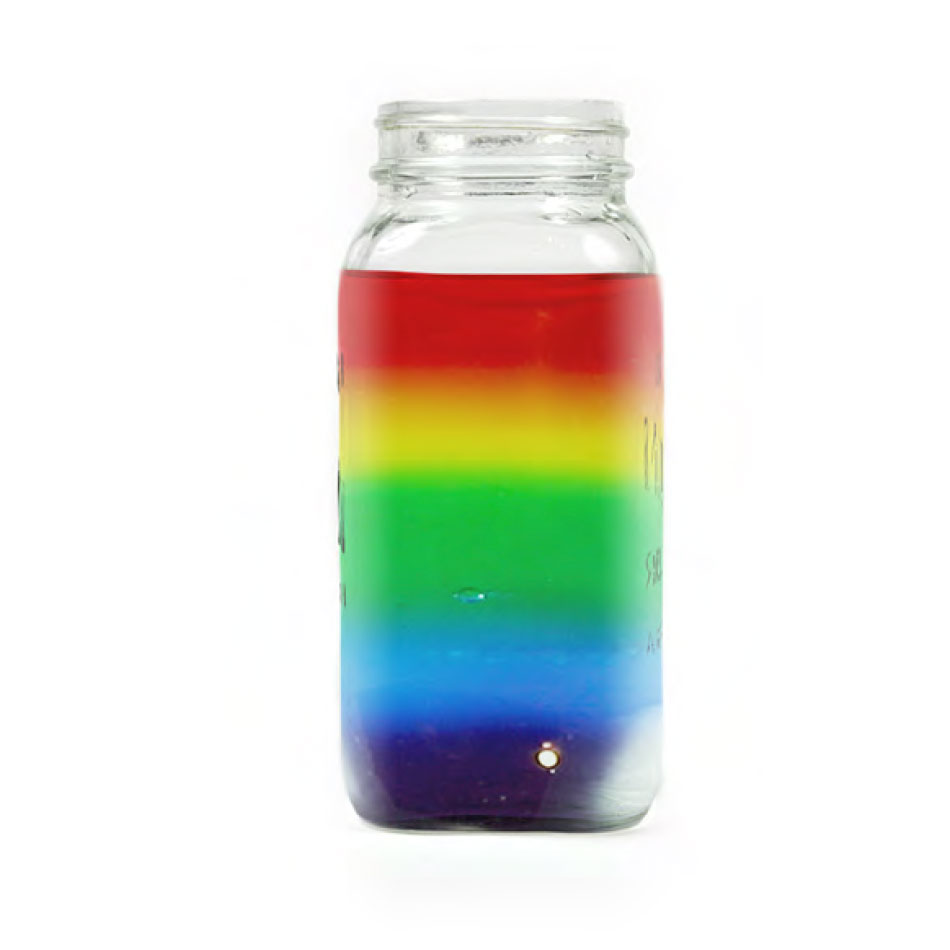Method:
- Find a jar around your house. The taller your jar, the thicker your layers can be.
- Pour in honey to make the first layer, about 1½ to 2 cm thick. Pour this slowly and evenly into the centre of the jar.
- In a small bowl or glass, combine one drop of red food colouring, one drop of blue food colouring and a few drops of water. Together, they will make purple. Mix the purple water completely into the honey. Let this settle for 60 seconds.
- For your blue layer, use blue dish detergent. Or, if you only have clear dish detergent, put some in a small bowl with a drop of blue food colouring added. Mix it carefully, and then slowly add it to the jar to make a second layer 1½ to 2cm thick.
- In another mixing bowl, add a drop of green food colouring to some water. If you don’t have green food colouring, make your own by mixing blue and yellow together. Tilt the jar, and slowly pour this green water in, so that it trickles down the side of the jar to make yet another layer 1½ to 2 cm thick.
- Wait a few seconds. Then, for your fourth layer, add enough vegetable oil to make a layer 1½ to 2 cm thick. Again, tilt the jar and pour very slowly so the colours don’t mix. (You may be wondering: where’s orange? Sadly, you can’t make this layer truly orange, because water-based food colouring won’t mix with oil.)
- For your top layer, add some red food colouring to some rubbing alcohol. Mix it thoroughly, then tilt the jar and carefully pour it slowly in, until the top layer is 1½ to 2 cm thick.
How does it work?
This rainbow is all thanks to the science of density! Density is a measure of how densely packed molecules are within a liquid. The denser a liquid (for instance, honey), the more closely packed the molecules. Less dense liquids can float on top of more dense liquids because they’re lighter!


